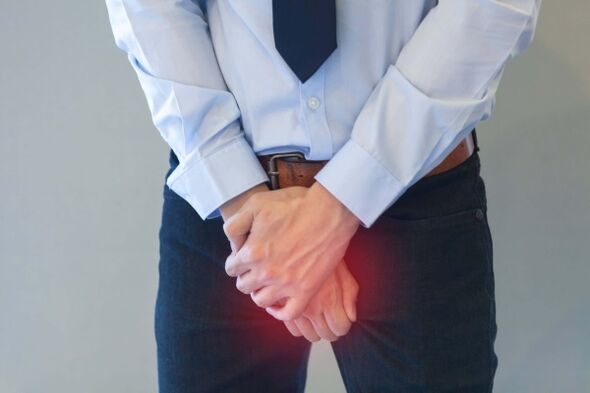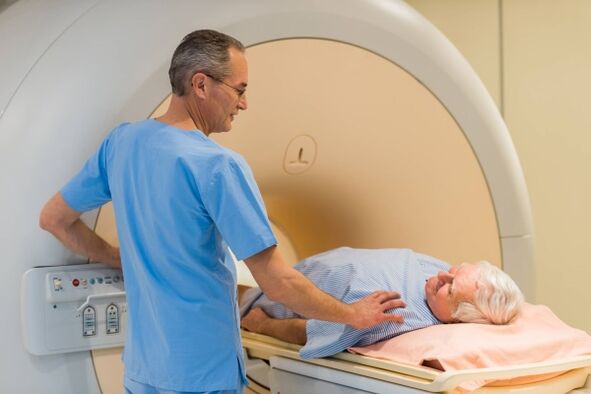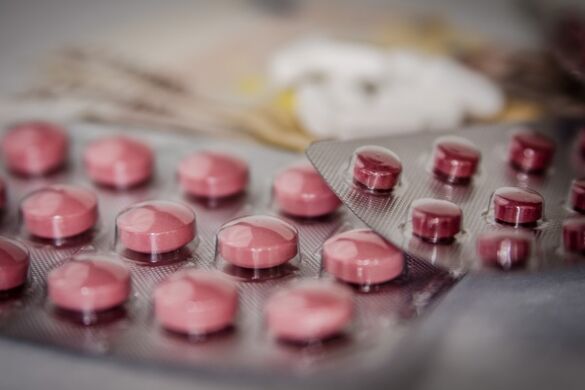Acute prostatitis is characterized by a pronounced clinical picture. The disease is dangerous with some serious complications, so it needs timely and complicated treatment. How to recognize and treat the disease is described in this article.
Acute prostatitis is an inflammatory disease, accompanied by pronounced painful sensations and can pose a great danger to health. For a successful prognosis of the disease, you should consult a doctor in time for a competent diagnosis and appointment of treatment.
General features of the disease
Acute prostatitis is a rapidly developing inflammatory process in the prostate gland. It has four stages of development:
- Catarrhal.At this stage, the gland swells slightly, the inflammation affects only the mucous membrane of the gland's excretory ducts. This period is the most favorable time for treatment - if you start treatment at this time, you can be cured in less than two weeks. The nature of the inflammation is not purulent but edema appears to block the ducts, preventing secretions from the gland. Stagnation begins.
- Capsule form.As a result of the stagnation, the bacteria entered the organ that started their activity in it. Since this organ is composed of cells, grouped into lobules and separated by connective tissue, inflammation affects an organ first.
- Parenchyma.Inflammation passes from one lobe to another, with numerous pustules in different parts of the gland.
- Purulent abscess.The pustules merge and a pus-filled bladder forms in the gland. Over time, it can break open, spread pus, and enter the space around the prostate and bladder, urethra, or rectum. When an abscess is opened, the pus does not drain completely and this becomes a new ring in the inflammatory process.
How quickly the pathological process develops and how it ends depends on several factors: the reason for the inflammation, the timeliness and appropriateness of the treatment.
Reason
In 90% of cases, the cause of acute prostatitis is an infectious lesion. Pathogens can be one or several types of bacteria and viruses:
- Gonococci are one of the most dangerous bacteria, they quickly initiate pyogenic processes.
- Trichomonas ranks first among sexually transmitted microorganisms. Therefore, penetrating into the intercellular space of the gland, requires a long course of stubborn treatment.
- Chlamydia - in addition to toxicity, they can stick to red blood cells, increase the sedimentation rate and interfere with blood circulation in the affected area. They penetrate deeper than Trichomonas.
- Staphylococci, yellow manifestations are particularly common. It can exist in any tissue and organ, causing saturation and thickening of the blood.
- Ureaplasma is a hybrid between a protozoan and a virus. It is possible to enter the prostate gland from the urinary tract or through unprotected intercourse.
- Escherichia coli is a gram-negative bacterium, a frequent causative agent of acute inflammation. It enters the body due to unsanitary conditions during food processing.
This is not a complete list of bacteria and viruses that can cause acute prostatitis.
Often the reason is not just that the infection can live in the body for a long time with almost no symptoms. They begin to grow rapidly when there are contributing factors to this:
- Frequent or one-time hypothermia. Cold weakens the body's defenses and makes it harder to harbor disease-causing bacteria, especially if hypothermia is related to everyday tasks.
- Irregular sex life. Stagnation of secretory glands (which are an integral part of sperm) promotes bacterial multiplication.
- Run infection. This could be an infection caused by unprotected sex or bacteria that have caused a mild infection in the urinary tract. The consequences of a purulent pharyngitis that is not completely cured in the form of strep can also cause inflammation. Even tooth decay can cause prostatitis.
- Weakened immunity. If, due to illness or uncontrolled ingestion of antibiotics, the body's defenses are not enough, then bacteria will inevitably manifest themselves.
- Failure to observe the rules of personal hygiene.
Symptoms of acute prostatitis
Symptoms depend on the stage of the disease.
During prostatitis, the patient has a slight discomfort and a feeling of heaviness in the perineum, and the urge to go to the toilet at night becomes more frequent. Urination is accompanied by burning and pain. The gland itself is normal or not enlarged, painful to palpation. The temperature remains normal or slightly increased. Not drunk, overall healthy.
The follicular phase has more manifestations. The pain gradually increases, becomes constant, sometimes strongly radiates to the penis, sacrum or rectum. Urinary retention occurs because of difficulty urinating due to acute pain. Passing a bowel movement is also accompanied by severe pain.
The temperature rose to 38 degrees and remained at this level. The prostate gland is significantly enlarged, thick, tight, painful to the touch.

Parenchymal prostatitis is very difficult to cure. Appetite disappears, chills appear, general weakness. Frequent urge to defecate and short urination are replaced by acute urinary retention. Trying to empty the bladder or bowel is nearly impossible due to the unbearable pain. This condition is aggravated by constipation and a full bladder, which spreads to the entire perineum, which can only be relieved by lying on the stomach with the legs bent.
The temperature rises above 39 degrees. Inflammation begins to spread to other organs, mucus secretes from the rectum. The prostate gland is irregularly shaped, enlarged, and painful. The hand may not be palpable due to edema.
The formation of an abscess is accompanied by the localization of the acute pain point - where the abscess appears. It is extremely difficult to pass urine, stool and gas, accompanied by sharp pain that spreads down to the intestines. The temperature is kept above 39. 5 degrees, chills, fever, sometimes a delusional state appears.
Then, all of a sudden, relief came: the pain disappeared, the temperature dropped. However, this does not mean that the patient has recovered: the fact is that the abscess has broken open and at this time it is necessary to carry out urgent procedures to clear the purulent body, since negative consequences can bevery diverse.
Diagnose
Diagnosis is made on the basis of an assessment of the patient's complaints, and analysis of urine, blood, and prostate secretions. In addition, they used digital rectal diagnostics, ultrasound, and CT.
The severity of urinary disorders was assessed by ureteroscopy.
General analysis of urine allows you to identify the disease at the earliest stage, when the characteristic symptoms are not yet present. The alkaline acidity index itself indicates the development of inflammation.
Testing for bacteria in the urine allows you to determine the nature of the inflammation and its cause. Changes in urine color, odor, or consistency should not be considered absolute evidence of acute prostatitis.
A complete blood count is the basis for disease study. Characteristic indicators of acute prostatitis are a low hemoglobin level (normal 130 g / l), a high concentration of urea and creatinine, as well as the level of leukocytes and the erythrocyte sedimentation rate. The protein is not normal, as is the white blood cell count - not more than 5 units.
Specific analysis of PSA allows you to determine not only inflammation, but also malignant formation.
PCR studies allow you to quickly identify any genital infection that is often the cause of acute prostatitis.
Ultrasound allows you to determine the size of the prostate gland, its edges, the presence of point and diffuse changes. If an abscess has formed, this study can determine its size and location. Where possible, research is done in person; if pain and swelling do not allow this, the study of the gland is carried out from the side of the abdomen.
Sometimes an ultrasound is done with the observation of the frequency variation of the sound reflected from the organ. This allows you to assess the blood supply to the prostate gland - the process of vascular circulation, which can increase or decrease depending on the type of inflammation and its stage. Allows you to distinguish cancerous tumors from acute prostatitis.
If the doctor determines that surgery is necessary, they will order a CT or MRI scan to examine the details of the inflammatory process.

Treatment of acute prostatitis
Disease therapy is always complex, involving different medications, procedures, and diets. The course of treatment can last about 2 months.
The doctor's main task is to eliminate the cause of the inflammation, which often includes an infection. For this, antibiotics are prescribed (alone or in combination). The choice of a drug depends on several factors:
- susceptibility of pathogens;
- concomitant disease of the patient;
- mode of action of the drug.
Unable to self-diagnose and treat: an effective drug selected on the basis of laboratory tests
To combat the agents that provoke the acute inflammatory process, fluoroquinolones and third-generation cephalosporins are most often used. For the treatment of acute prostatitis, the bactericidal effect of antibiotics is essentially important.
Depending on the stage and condition of the patient, the dose and form of release of the drug are selected: the more neglected the situation, the higher the dose, and it is important that the drug reaches its destination faster, therefore, the drug. In injectable form is preferred over pills.
It is necessary to normalize the flow of urine and excretion. If urinary retention has turned acute, trocar vasectomy is indicated - puncture of the bladder, then insert a thin tube.
If such drastic measures are not needed, non-steroidal anti-inflammatory drugs will be prescribed to restore normal urination, which helps to eliminate swelling and pain. The drug is prescribed as a tablet, injection, or rectal suppository.
If acute prostatitis has progressed to the abscess stage, treatment depends on its stage of disease. The infiltrative phase is treated with aggressive therapy with antibiotics and immunostimulants. The blockage is given with pain medication to help the patient get through the pain.
If an abscess has formed, it can be treated only with the help of surgical intervention: opening the bladder with pus, rinsing and placing a drain. After surgery, therapy is prescribed to fight bacteria and intoxication.
Treatment of acute prostatitis is not limited to symptom relief. The course of antibiotics must be taken until the end, and not until the pain goes away.
After the seizure goes away on its own, it's time for physical therapy. It includes UHF and microwave procedures, electrophoresis, and prostate massage. The goal is to reduce swelling (if present) and improve the flow of glandular secretions to avoid blockage.
It is important to stick to your diet throughout treatment. You must refuse the following products:
- alcoholic beverages, coffee, fried foods and salt - contribute to the appearance of congestion;
- white cabbage, apples, legumes and raw vegetables - cause flatulence, as a result of which the pelvic organs, including the prostate, are compressed;
- acidic drinks, viscera - they irritate the urinary tract.
The diet should include cereals, stewed vegetables, dairy products and baked fruits. All this contributes to the normal functioning of the intestines. It is necessary to follow the drinking regime, drink at least 2 liters of liquid (filtered water, fruit juice, juice) per day. The more frequently the urinary tract flushes, the less likely it is to get an infection.
It is recommended to take vitamin and peptide complexes to improve tissue regeneration and quickly restore the normal functioning of the gland.

The favorable course of treatment is assessed by the restoration of glandular tissues, the normalization of the chemical indications of the prostatic secretions, the absence of pathogens in the analyzes and the general condition of the patient. .
Prognosis and complications
The earlier the treatment, the quicker and easier it is to get rid of acute prostatitis. Complications are each subsequent stage of the disease, chronic course of the disease, inflammation spreading to other organs, infertility, sepsis. If the disease has already started, it may be necessary to remove the gland itself.
With timely treatment, at the end of the course, all body functions are restored, working capacity is fully restored.
Prevent
Preventive measures include not having unprotected sex (to exclude sexually transmitted diseases), careful hygiene and timely treatment of inflammatory processes in the urinary tract. It is necessary to maintain immunity, not to start caries and carefully treat any infectious diseases.
You should also exclude factors that contribute to the development of the disease. For this you need:
- have a regular sex life with a partner;
- avoid hypothermia (both permanent and one-time);
- give up alcohol, smoking and a sedentary lifestyle;
- regularly undergo a routine examination by a urologist;
- do not self-medicate at the first sign of the inflammatory process;
- follow a balanced diet;
- taking vitamins, especially during the spread of infectious diseases.
Prostatitis appears due to an infection that develops under favorable circumstances. Treatment is carried out with antibiotics, anti-inflammatory drugs, analgesics and vitamins. During treatment, it is important to adhere to the diet.































